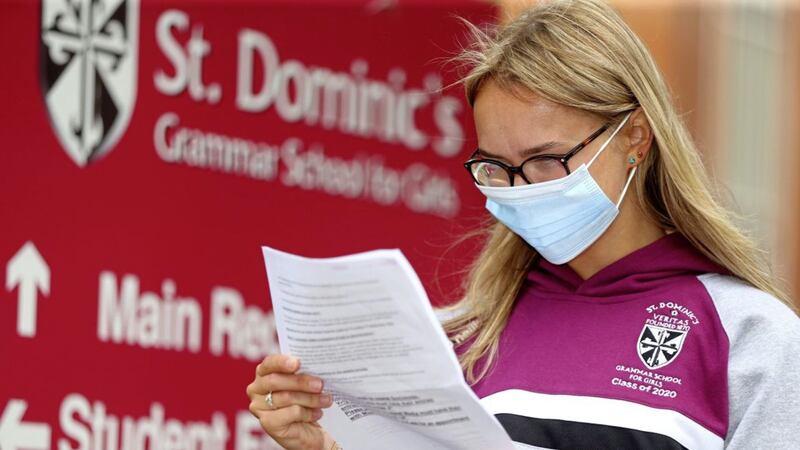THIS was certainly an A-level results day like no other.
While there was some familiar news - girls did better than boys, maths was the most popular subject, languages are improving in popularity - the results were not based on actual exams.
Teachers were instead asked to predict the grades of pupils and an early morning briefing from CCEA informed us that in 96.7 per cent of cases, their estimates either matched or were within one grade of the final result following standardisation.
Sounds a high figure, but one grade can make a massive difference to a student.
Asked to further break this down, it was revealed that 58 per cent of results matched exactly but for 37 per cent, teachers were over-optimistic in their prediction. In around 5 per cent of tests they underestimated the result.
It is this 37 per cent that is now being scrutinised to the nth degree and the finger of blame is being pointed at the exams board, not at teachers.
Much of the talk before and on results day was that young people were being subjected to a postcode lottery.
Politicians said there would be simply no justification for schools in more disadvantaged areas having grades adjusted down.
However, a school's past performance had no influence on how well pupils fared yesterday.
St Dominic's in west Belfast reported a 100 per cent pass rate while Bangor Academy was among those who said they were downgraded significantly.
But there were several instances in which teacher predictions were a good bit higher than the final grade. This affected both grammar and non-grammar schools.
Listening to the accounts from schools and students yesterday, it sounded like there had been a systemic failure - school after school reporting a massive downgrading.
Clearly this could not have been widespread. The proportion of pupils achieving every grade increased in a year in which overall entries fell.
Such an improvement would not have happened had all of the north's almost 200 post-primary schools been punished by the exams board's algorithms.
It is somewhat difficult to fully understand what is angering the most vocal schools. It might partly be that it is unclear exactly why their suggested grades were lowered significantly.
One way or the other, they will now have the chance to appeal.
There have also been calls to let predicted grades stand, as has happened in Scotland.
Given there have been so many last-minute changes in the last week or so, it would come as no surprise if this was allowed to happen.








